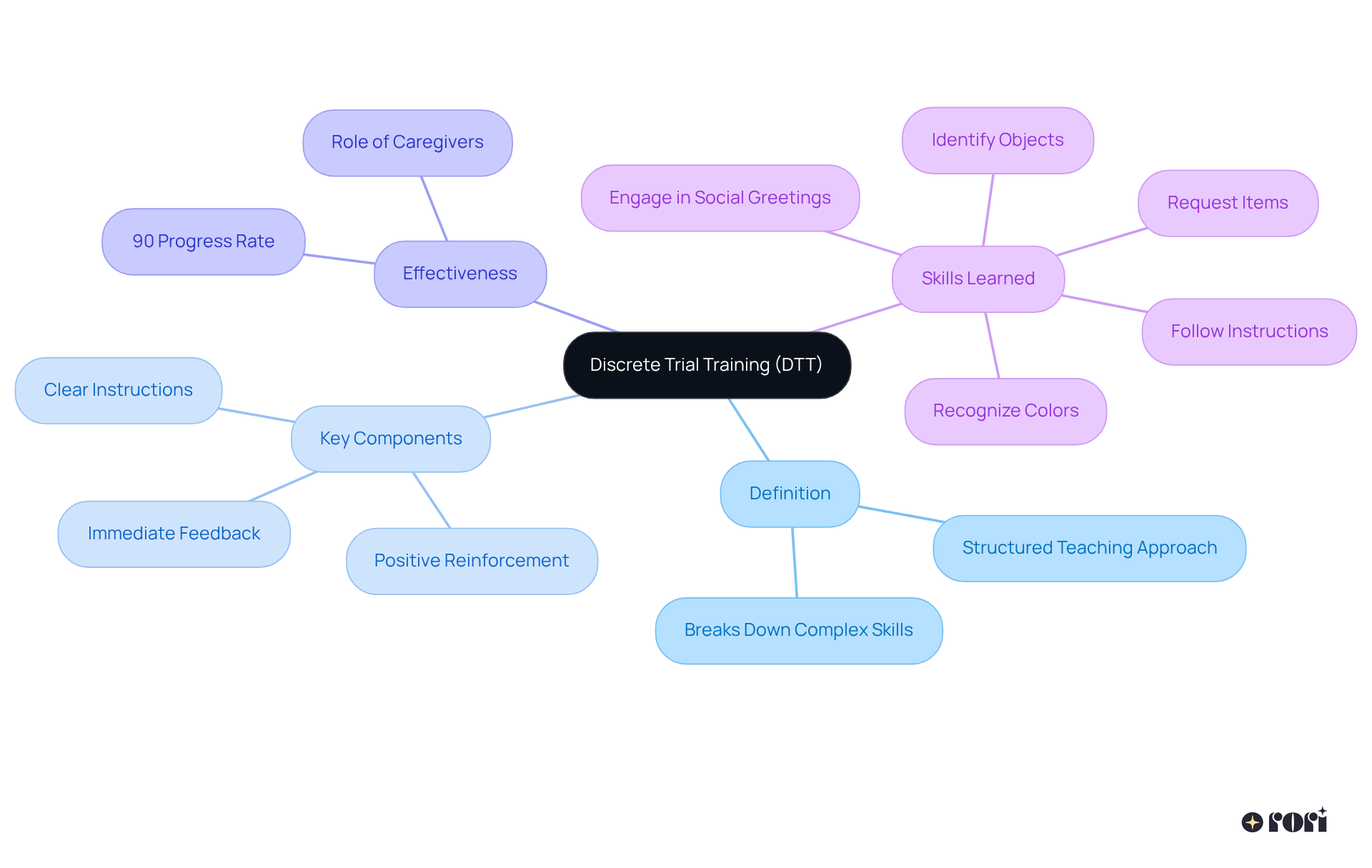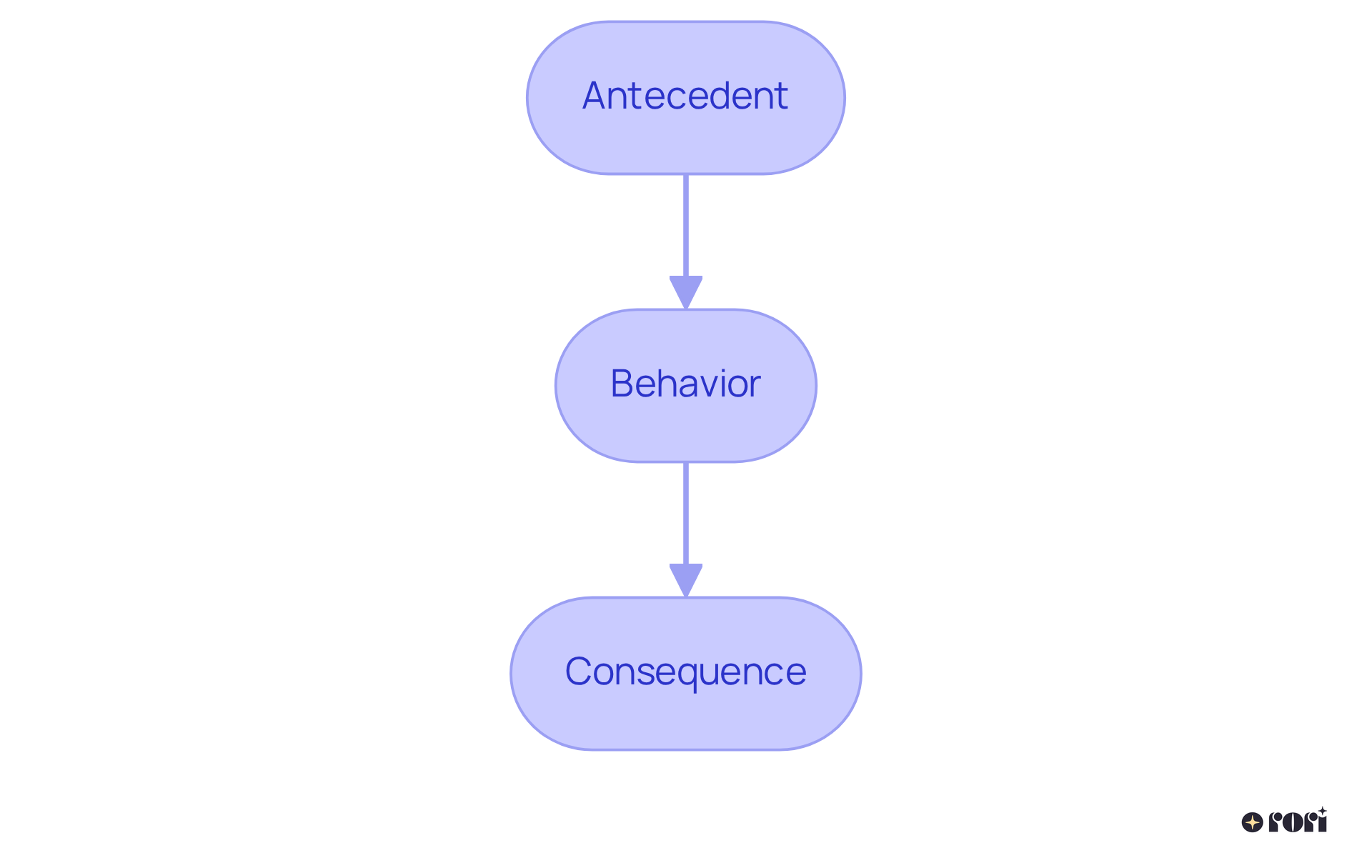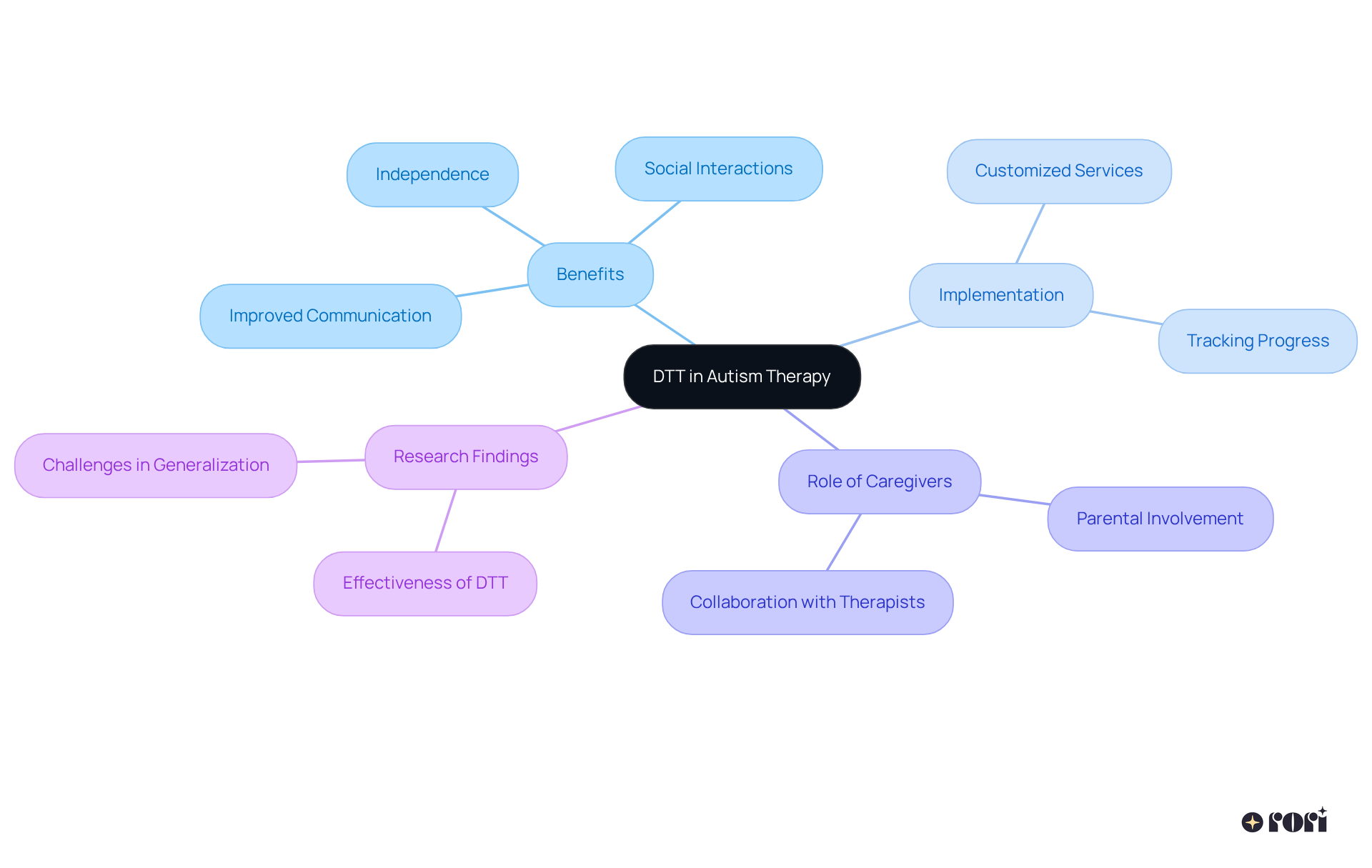Have you heard about Discrete Trial Training (DTT) in ABA? It's a structured teaching method that breaks down complex skills into smaller, manageable pieces. This approach is particularly helpful for children with autism, making learning more accessible and enjoyable! 🌟
What’s great about DTT is how it promotes focused learning and skill development. With clear instructions, immediate feedback, and positive reinforcement, children can enhance their communication and social interactions. Plus, it fosters greater independence, which is something every parent hopes for!
If you're looking for effective ways to support your child's learning journey, DTT might be a fantastic option. Let’s explore this together! We’re here to help you every step of the way!
Discrete Trial Training (DTT) has become a key player in Applied Behavior Analysis (ABA), changing the way children with autism learn and develop important skills. By breaking down complex behaviors into smaller, manageable pieces, DTT allows for focused teaching and effective reinforcement. But as families and practitioners dive into this method, some questions pop up:
Let’s explore these questions together and uncover the transformative potential of DTT in enhancing communication, social interaction, and overall independence for our young learners.
The dtt definition aba indicates that Discrete Trial Training (DTT) is a structured teaching approach within Applied Behavior Analysis (ABA) that breaks down complex abilities into smaller, manageable elements. This systematic method aligns with the dtt definition aba and involves a series of trials where specific abilities or behaviors are introduced, practiced, and reinforced. According to the dtt definition aba, DTT is especially helpful for children with autism, as it promotes focused learning and skill development in a controlled setting. It emphasizes clear instructions, immediate feedback, and positive reinforcement—key ingredients for encouraging those desired behaviors.
Research shows that DTT effectively teaches a wide range of skills. In fact, studies have revealed that 90% of young learners made significant progress when DTT was implemented with active caregiver participation. This really highlights how important caregivers are in improving behavioral outcomes and boosting confidence in children.
You might be wondering how DTT plays out in real life. Well, children learn to:
through these structured trials. Not only does this approach help them acquire new skills, but it also reduces frustration and anxiety by providing clear expectations and opportunities for success.
Recent studies further support the dtt definition aba's role in interventions for individuals on the spectrum. They emphasize its strong reliability and effectiveness in encouraging the generalization of skills across different environments. As families and healthcare professionals recognize the value of DTT, its integration into personalized treatment strategies continues to empower children with developmental disorders, enhancing their communication and social interactions.
Let’s explore this together! DTT could be a game-changer for your child, and we’re here to help you every step of the way!

Did you know that Discrete Trial Training (DTT) has its roots back in the 1960s? Dr. Ivar Lovaas at the University of California, Los Angeles, aimed to create effective interventions for youth with developmental disorders. This approach, grounded in behaviorism, focuses on reinforcement and structured learning—making it a key part of Lovaas's therapeutic methods.
Over the years, the DTT definition ABA has evolved and been refined, becoming a widely recognized and evidence-based practice within Applied Behavior Analysis (ABA) therapy. Research consistently shows that early intervention using DTT can lead to significant improvements in communication, social skills, and overall functioning for children with developmental disorders. Isn’t it amazing how far we’ve come?
Lovaas's contributions truly laid the groundwork for DTT's role in helping children with developmental disorders. His work has influenced countless practitioners and shaped the therapy landscape we see today. If you’re curious about how this could help your child, let’s explore this together! We’re here to help you every step of the way!

The DTT definition aba outlines a fantastic approach that’s built on a few key components, making learning effective for individuals with autism. Let’s break it down:
Each trial is repeated several times to really reinforce learning and help the learner master the task. This structured method not only allows for tracking progress but also lets you tweak teaching strategies based on what the data shows during sessions. Research shows that consistent reinforcement, especially when tailored to what the individual enjoys, boosts engagement and motivation, leading to better learning outcomes. By using the antecedent-behavior-consequence framework, educators can create a steady learning environment that supports skill development and helps learners generalize their abilities across different situations. Let’s explore this together and see how it can make a difference!

The dtt definition aba illustrates how Discrete Trial Training (DTT) is a game-changer in autism therapy! It creates a structured and predictable learning environment, which is especially helpful for individuals on the autism spectrum who might struggle with traditional teaching methods. This approach really boosts skills in key areas like communication, social interactions, and everyday activities.
Research shows that young learners who participate in the DTT definition aba often make impressive gains in learning new behaviors and skills. This not only promotes greater independence but also enhances their overall quality of life. By using the dtt definition aba, therapists can tailor interventions to meet each individual's unique needs, making therapy both effective and empowering.
The organized nature of DTT, with its clear steps and positive reinforcement, leads to significant improvements, including better communication and social interactions. This ultimately helps young individuals on their journey toward greater autonomy. Plus, it’s great to know that ABA therapy is covered by insurance, which includes the dtt definition aba, making it easier for families to access support.
At Rori Care, we offer customized services that include DTT, ensuring that each treatment plan is flexible and adapts to progress reports and active caregiver involvement. This is crucial for achieving meaningful advancements in 90% of youth when recommended hours are fully implemented. Gathering data during DTT definition aba sessions is vital for tracking progress and adjusting teaching strategies according to each learner's needs.
While DTT is effective, transferring skills learned in therapy to real-life situations can be tricky. That’s why we use positive reinforcement—like verbal praise or rewards—to motivate young individuals and encourage them to repeat desired behaviors. And let’s not forget the important role parents play in the DTT process! Their involvement not only reinforces skills at home but also creates a stable learning environment, helping kids become more independent.
Empowering caregivers with ABA principles boosts their ability to support their child's behavioral goals, leading to better outcomes and a more harmonious family dynamic. We’re here to help you every step of the way! Let’s explore this together!

Discrete Trial Training (DTT) is truly a cornerstone in Applied Behavior Analysis (ABA), offering a structured and effective way to teach essential skills to children with autism. By breaking down complex behaviors into smaller, manageable tasks, DTT helps create a focused learning environment where children can thrive. With clear instructions, immediate feedback, and positive reinforcement, it really shines in promoting desired behaviors and enhancing the overall learning experience.
As we look back, it’s fascinating to see how DTT has evolved. Its roots trace back to the groundbreaking work of Dr. Ivar Lovaas in the 1960s. Over the years, DTT has transformed into a well-established, evidence-based practice that significantly boosts communication, social skills, and overall functioning in children with developmental disorders. The antecedent-behavior-consequence framework is key in creating a predictable learning environment, which is so important for individuals on the autism spectrum. Plus, when caregivers actively get involved, it reinforces the skills learned during therapy, leading to even better outcomes.
In wrapping up, we can't underestimate the importance of DTT in autism therapy. As more families and professionals recognize its effectiveness, integrating DTT into personalized treatment plans continues to empower children, fostering their independence and enhancing their quality of life. Embracing this structured approach not only benefits the learners but also strengthens the support system around them. If you’re navigating the complexities of autism therapy, exploring DTT could be the key to unlocking a brighter future for children on the spectrum. Let’s explore this together! We're here to help you every step of the way!
What is Discrete Trial Training (DTT) in Applied Behavior Analysis (ABA)?
Discrete Trial Training (DTT) is a structured teaching approach within ABA that breaks down complex skills into smaller, manageable components. It involves a series of trials where specific abilities or behaviors are introduced, practiced, and reinforced.
Who can benefit from DTT?
DTT is especially helpful for children with autism, as it promotes focused learning and skill development in a controlled setting.
What are the key components of DTT?
Key components of DTT include clear instructions, immediate feedback, and positive reinforcement, which are essential for encouraging desired behaviors.
How effective is DTT in teaching skills?
Research shows that DTT effectively teaches a wide range of skills, with studies indicating that 90% of young learners made significant progress when DTT was implemented with active caregiver participation.
What skills can children learn through DTT?
Children can learn to identify objects, recognize colors, follow instructions, request items, and engage in social greetings through structured trials in DTT.
How does DTT help reduce frustration and anxiety in children?
DTT helps reduce frustration and anxiety by providing clear expectations and opportunities for success, which allows children to acquire new skills more effectively.
What does recent research say about DTT's effectiveness?
Recent studies emphasize DTT's strong reliability and effectiveness in encouraging the generalization of skills across different environments, making it a valuable intervention for individuals on the autism spectrum.
How is DTT integrated into treatment strategies?
Families and healthcare professionals recognize the value of DTT, leading to its integration into personalized treatment strategies that empower children with developmental disorders and enhance their communication and social interactions.